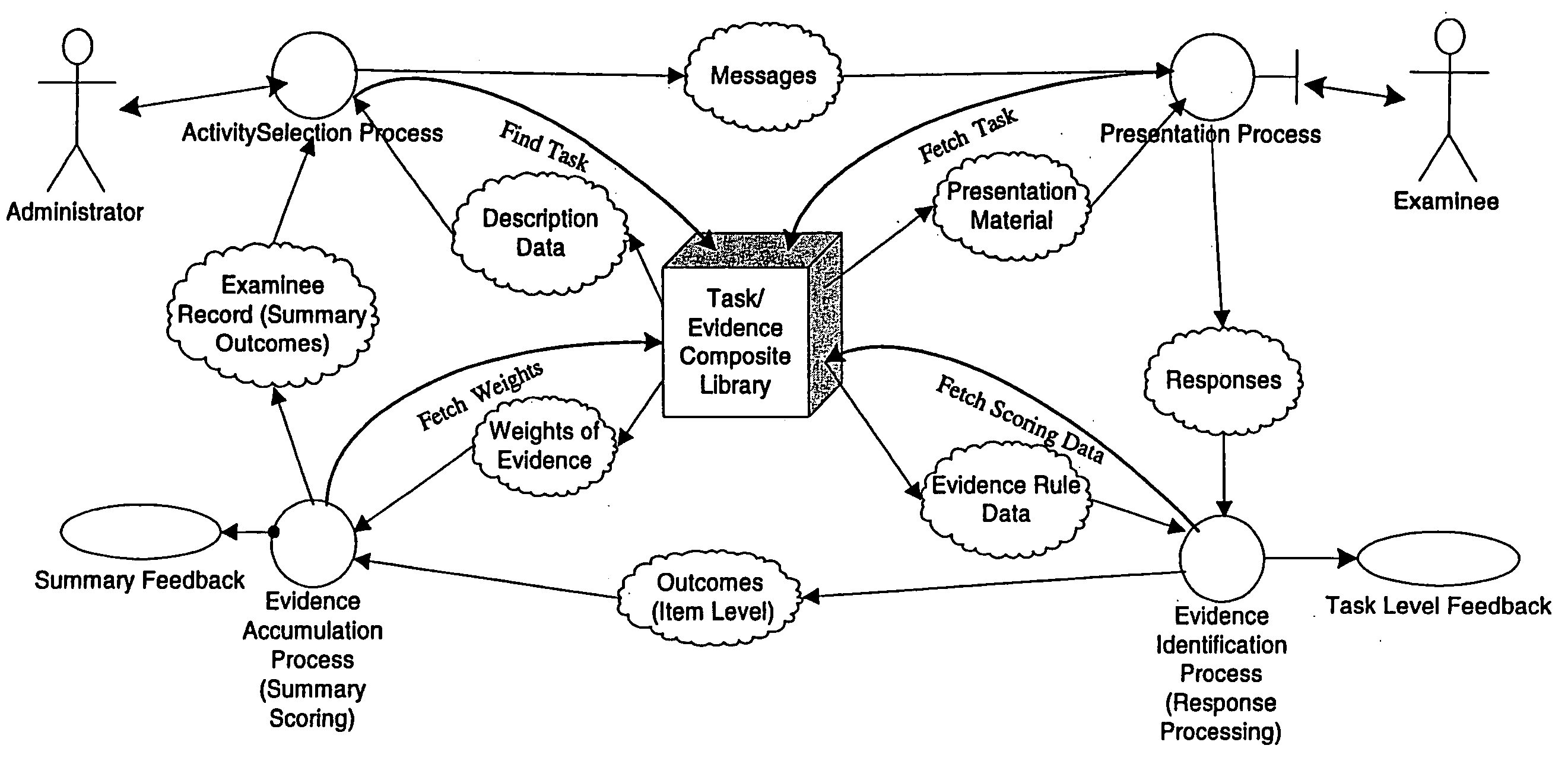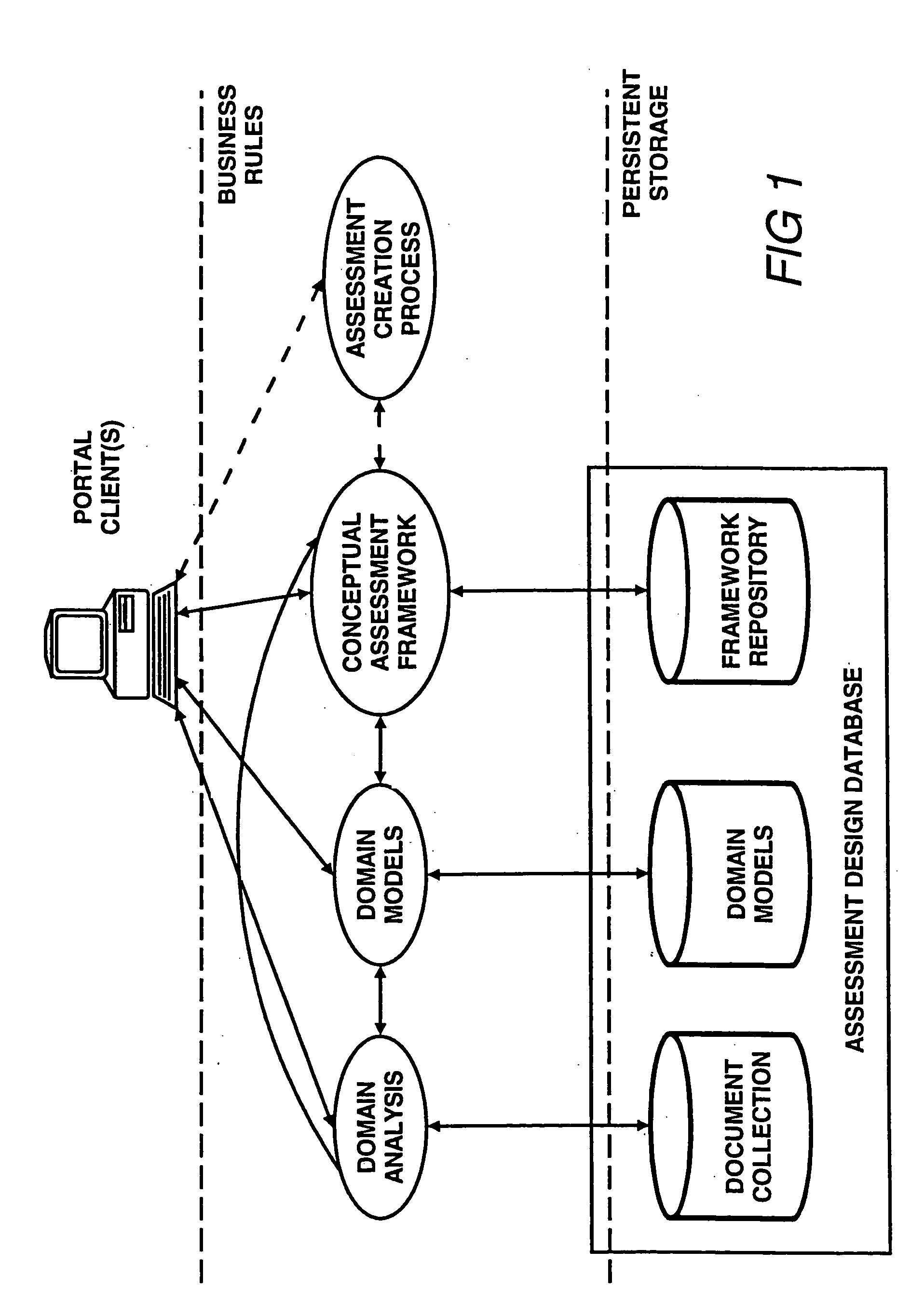Portal assessment design system for educational testing
a technology of assessment design and educational testing, applied in the field of evidence-centered assessment design, can solve problems such as compromising assessment validity, and achieve the effect of facilitating creation, maintenance, reuse, and distribution and storag
- Summary
- Abstract
- Description
- Claims
- Application Information
AI Technical Summary
Benefits of technology
Problems solved by technology
Method used
Image
Examples
Embodiment Construction
[0064] In the following detailed description, numerous specific details are set forth in order to provide a thorough understanding of the present’ invention. However, it will be apparent to one of ordinary skill in the art that these specific details need not be used to practice the present invention. In other instances, well known structures, interfaces, and processes have not been shown in detail in order not to unnecessarily obscure the present invention.
[0065] The conceptual framework, which helps users organize reasoning through an evidence-centered design process, is realized in the Portal Assessment Design System through a) the system's separation into discrete design modules; b) the manner in which the evidence-centered object model is distributed across these design modules; c) information available through Help (glossary and conceptual work process). The Portal Assessment Design System allows a user to generate assessments through the evidence-centered design process.
[00...
PUM
 Login to View More
Login to View More Abstract
Description
Claims
Application Information
 Login to View More
Login to View More - R&D
- Intellectual Property
- Life Sciences
- Materials
- Tech Scout
- Unparalleled Data Quality
- Higher Quality Content
- 60% Fewer Hallucinations
Browse by: Latest US Patents, China's latest patents, Technical Efficacy Thesaurus, Application Domain, Technology Topic, Popular Technical Reports.
© 2025 PatSnap. All rights reserved.Legal|Privacy policy|Modern Slavery Act Transparency Statement|Sitemap|About US| Contact US: help@patsnap.com



